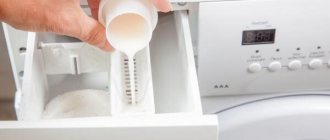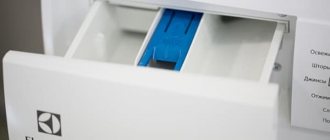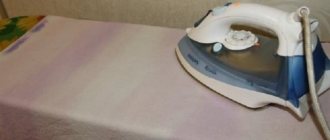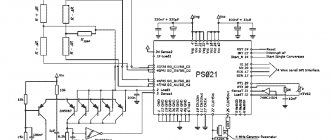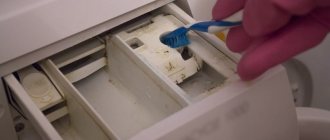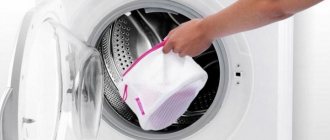In the modern world, almost every housewife is familiar with such wonderful technology as an automatic washing machine. Its use in everyday life not only helps to keep clothes and linen clean and fresh, but also significantly saves the energy and time of its owner. In order for equipment to last a long time and not break, you need to use it carefully and correctly.
Can fabric softener be added to the drum?
It is possible, but it depends in what case. If you need to do an additional rinse after a full wash cycle, when the machine has turned off, you can add conditioner directly to the drum. ... Do not pour conditioner into the drum before washing. There will be no effect from it, since it will be washed away with water.
Interesting materials:
How many endings are there in Quantum Break? How many ILO conventions has Russia ratified? How much feed should I give my piglet? How many cubic meters are in 1 ton of cement? How many cubic meters are in one ton of liquefied gas? How many cubic meters are in one ton? How many cubic meters are in a ton? How many cubic meters are there in 1 kg of propane? How many square meters should a bathroom be? How many square meters are in a two-room Khrushchev house?
Action of the product
The substance contains cationic surfactants, which settle on the material, creating a kind of coating in the manner of an invisible film.
Conditioner effect:
- softening;
- repels dirt and moisture;
- simplification of ironing;
- maintaining color saturation;
- elimination of static;
- pleasant smell immediately after washing and for a long time when stored in a closed space.
Some products contain silicone. It maintains the effect for a longer period, and the item looks like new longer.
This is interesting: often fabric softeners are labeled “rinse aid” because the product is released from the dispenser during the rinse cycle, rather than the main wash.
You should be careful when using any chemical cleaning products. This product cannot be used with all types of fabric.
What things is it suitable for?
You must follow the washing rules for each individual item. Typically, recommendations on this topic appear on a special label that is equipped with all fabric products. If the tag indicates that machine washing is allowed, then you can use conditioner.
Features of the interaction of the active substances of the rinse aid with certain materials:
- Silk products acquire unsightly smudges. They will disappear after the next wash with a special product for such things or will remain forever if a concentrate was used.
- Shapewear loses its elasticity and may not fit your figure.
- Outerwear will lose its water-repellent properties.
- Products made from breathable fabrics, microfiber and Gore-tex are strictly prohibited from being washed using any conditioners or other auxiliary substances. Otherwise, the item will lose its basic functions and become useless.
At first glance, it seems that fabric softeners are very harmless and cannot harm. But that's not true. If the label prohibits the use of air conditioners, it cannot be ignored, otherwise the damage done will be irreparable.
Where is the rinse aid dispenser located?
Most often, in the machine, the place where the detergents for the washing itself and for conditioning during washing are placed is a tray on the left side. Less often, the manufacturer installs it on the right. If the washing machine is designed for loading through a hatch that opens upward (vertical loading), then the tray is installed from the inside on the lid. The tray itself is divided into three compartments, different in width, and sometimes can be highlighted in different colors.
- For washing powder (marked P or B). This compartment is the deepest; all washing substances go here.
- For soaking (marking I or A). The compartment is smaller in size compared to the first one; detergents for pre-washing or soaking are poured here
- For conditioning (marking – flower). This compartment is the smallest in depth and size. It is made so that the water in the conditioner compartment of the washing machine does not wash it out during washing.
How to choose?
When purchasing, you should not focus only on well-known brands. You should pay attention to the following things:
- Compound. The fewer ingredients a product contains, the safer it is. The composition of universal products includes surfactants, silicones, and fragrances. The presence of benzyl acetate and terpineols can cause skin irritation.
- Surfactant concentration. The more surfactants in the composition, the less conditioner will need to be added when washing.
- Number of flavors. Some people like their washed clothes to smell fragrant, while others cannot stand strong odors.
- Purpose. You can buy a universal product, or you can choose several options for different types of laundry.
When choosing, it doesn’t hurt to check the product for foam formation. You need to shake the bottle vigorously; if foam forms, it is better not to buy the product.
Washing machines - what are they?
Before we start figuring out where to add conditioner in a washing machine, let's look at what the detergent tray in an automatic machine is and where it is located.
In modern apartments there are two types of automatic machines. They differ in how the laundry is loaded there and are divided into models:
- with vertical loading;
- with front loading.
Important! Before you do your first wash, take a good look at the unit. This is useful to do even if the machine is new and all the documentation for it is in perfect order. It is especially important to familiarize yourself with the unit if you bought the device secondhand and the documents for it are lost.
Top loading machine
Top-loading appliances have the detergent tray at the top. Typically, manufacturers place it on the left side, but some models have this part on the right side, so don't let that confuse you.
Why is it needed?
During washing, clothes are exposed to the harmful effects of hard water salts and laundry detergents. In addition, the mechanical friction of things against the drum of the machine increases the rate of wear. As a result, clothes become stiffer and unpleasant to wear. Items made from synthetic fabrics accumulate static electricity and “stick” to the body, creating discomfort.
Conditioner or rinse aid solves all these problems. This product is added at the very last stage of washing; it contains certain types of surfactants and silicones, which form an invisible and imperceptible film on the fabric.
Effect of use:
- clothes become softer and pleasant to wear;
- the thinnest surfactant film repels dirt, so things get dirty less;
- ironing becomes easier;
- an antistatic effect is created;
- wear is reduced.
So, air conditioner is not only needed to make things smell nice, although that is what most people think.
When should it not be used?
It is not recommended to use even the best conditioner in the following cases:
- when washing silk, the product can cause streaks and ruin the fabric;
- for woolen products of large knitting;
- when washing shapewear and nylon products;
- for outerwear.
You should use products with caution, especially flavored ones, if you are prone to allergies. For people with sensitive skin, it is better to use a rinse aid for children's clothes.
Softener composition
The main components of the rinse aid are cationic surfactants that cover the item with a protective film and give an antistatic effect.
The silicone in the product makes the texture of the fabric elastic and soft, and increases paint fastness. Depending on the formula used and the combination of components in the product, silicone gives the fibers of the material different properties: the ability to repel moisture (hydrophobicity) or absorb it.
The conditioner contains thickeners and flavorings. Among the potentially dangerous components that you should pay attention to when purchasing a product are:
- benzyl alcohol;
- ethanol;
- chloroform.
Expert opinion
Irina. Housewife.
Ask a Question
These chemicals in large quantities can provoke an allergic reaction. All detergents must be stored out of the reach of children.
Homemade substitutes
Despite the wide variety of industrial fabric care products, many housewives prefer to use those made from scrap materials.
Vinegar
The most popular household substance used as an alternative conditioner. The softener is added to the rinse aid compartment. For a full 5 kg drum of clothes, 150 ml is enough.
Soda
Mainly used for hand washing. Depending on the total amount of liquid and its hardness, the concentration of soda is also selected - you will need approximately 50 g per 1 liter. It softens water and whitens things.
Salt
For 1 glass of water you need to take 3 tbsp. table salt and a few drops of essential oil. Add to conditioner compartment and wash as usual.
Hair balm
For 0.5 liters of water take 1 glass of vinegar and 150 ml of balm. A homogeneous mass is added to the dispenser of the washing machine. To obtain a thick paste (concentrate), which is diluted before use, you need to grind 5 tbsp. sea salt with 3 tbsp. balm.
A mixture of soda and vinegar 9%
The components are taken in a 1:1 ratio. First dilute the powder in 0.5 boiling water, and then pour in the liquid substance. For a pleasant aroma, you can add a couple of drops of essential oil. Keep in a storage container and use 50 ml with each wash.
Borax
Paste-gel is prepared from 50 g of soap shavings, 50 g of soda ash, 3 tbsp. glycerin, 1 tbsp. borax and 3 drops of essential oil. Dissolve the soap and soda in boiling water, add glycerin, and after bringing it to a homogeneous state, let it cool completely. Add borax and add oil. Add directly to the centrifuge.
Important: borax eliminates linen mites, fungi, mold and other parasites. At high concentrations it is a strong allergen.
Tennis balls
As the balls rotate, they constantly move, striking the fabric lightly. As a result, things are washed better, shake stronger and become more pleasant to the touch without the use of additional substances. Unlike vinegar and borax, they do not have a harmful effect on the washing machine, are not allergenic, are used repeatedly and do not leave an odor.
Regardless of whether you prefer an industrial air conditioner or one made at home, the main rule for getting the effect is to follow the dosage. Then things will be soft and smell nice, and the structure of the fabric will not be damaged.
Terms of use
Now that you know what fabric softener does, you need to learn how to use it correctly. The first rule is to use strictly the amount of product indicated in the instructions for use. A small dose will not give the desired effect, and excess conditioner will not rinse out and can cause an allergic reaction.
Why it's worth a try
Most housewives consider this purchase a pointless waste of money. Others do not consider such a purchase because of the possible harm of the chemical components. Or the most banal reasons: they cannot tolerate additional odors from laundry, they do not see the point in the product as such.
Despite all the considered nuances, the use of fabric softeners has very significant advantages.
Firstly, fabric products become soft and delicate.
Secondly, you can forget about the fact that your favorite sweater is “electric”, because most rinses remove static from clothes.
Thirdly, ironing things is much faster and more comfortable. And the appearance of the clothes remains in neat condition for a long time.
Fourthly, the wear resistance of the material increases. Creases, pilling, scuffs, dull color from repeated washings - all this can be avoided for a long time.
Solving the security issue is quite simple. How to choose a rinse aid? We simply buy those products that do not contain the dangerous components discussed above. At the same time, we make sure that the surfactant content is at the level of 5% -15%. If it is lower, there will be no effect when washing, therefore, “money down the drain.” If it is higher, then there is harm from the use of detergents.
Which conditioners are better for hand washing and which ones are better for automatic washing?
For automatic washing, conditioner is added to the machine before washing. For this purpose, it is better to use the most liquid formulations (“Vernel” or “Lenore”). For hand washing, it is advisable to use thicker and harder mixtures. However, in this case it is necessary to wait until they are completely dissolved.
Whenever processing clothing, it is necessary to adhere to the dosage and application schedule of conditioners, guided by the volume of laundry and washing equipment. To do this, you need to use a dispenser cap.
Types of funds and their differences
When purchasing a product to improve the condition of tissues, you should pay attention not only to the price and reputable brand, but also to the composition of the substance. Even if the label does not specify whether it is a concentrate, a siliconized rinse aid, or the like, you can learn from the ingredients about the main action and features of the substance.
What to pay attention to:
- The composition should include no more than 5 components at a time. If there are more of them, it means that the product contains harmful components and is not recommended for use when cleaning things for children and allergy sufferers. Usually there are: surfactants, natural fragrances, silicones, preservatives.
- The container needs to be shaken. The appearance of foam indicates low quality of the product or its expiration date.
- Surfactant can be from 5 to 15%. But some conditioners use different surfactants, and the total amount may be higher.
- Products containing benzyl acetate, terpineol and chloroform cause dermatological reactions similar to allergic ones. They are not safe for health.
- The presence of cationic surfactants neutralizes active substances harmful to the body that remain on clothes after washing.
- Flavors can be natural or artificial. But both of them, in large quantities, can cause a respiratory allergic reaction or suffocation.
- Silicone - gives things water-repellent or absorbent properties. Depends on other components.
- Dyes do not affect the color of the laundry and are intended solely to give a pleasant shade to the substance.
- Preservatives are necessary for long-term storage of the air conditioner after opening the package.
- A-terpineol is used to add lilac flavor, but may cause depression due to its central nervous system depressant.
- Benzyl alcohol - used to give the product a jasmine scent. Causes dizziness and nausea.
- Ethanol provokes blurred vision and disrupts mental activity.
- Chloroform is a CNS depressant.
- Linalool makes the mouthwash smell like lilies of the valley, but causes problems with muscle coordination and, in rare cases, causes cancer of the reproductive system.
This is interesting: it happens that a washed item lies in a closed space for a long time, and then an unpleasant, pungent odor is felt from it. This is due to excess washing powder. This will not happen when using baby detergents to wet clean clothes.
When choosing a quality product that does not include components hazardous to health, you still need to strictly follow the correct dosage. Excess surface active substances will not benefit either the tissue or the person.
There is a separate classification of air conditioners. They differ in their main components and actions.
Concentrates
In such products the amount of active substances is greater than in conventional ones, therefore their use is more economical - the dosage is reduced. This rinse aid does not need to be diluted (it will not thicken over time) and is poured into the washing machine compartment, as it is immediately ready for use.
The composition does not differ from conventional rinses, but the increased amount of active substances has increased effectiveness.
Important: Handle with care. Surfactants tend to accumulate on human tissues and organs, causing diseases and poor health. This happens due to an excess of the substance on the material of clothing or bedding that is constantly in contact with the skin. The amount of surfactant should be from 5 to 15%.
Children's
Used for washing items that come into contact with the delicate and sensitive skin of a child. They are usually hypoallergenic, have a small dosage and are harmless. Fragrances are practically not used, so the clothes will not acquire a special smell, but they will not “suffocate” when stored in a closet.
What should be in a children's conditioner:
- no more than 5% surfactant;
- absence of any fragrances;
- soft base without chloroform and other harmful substances;
- certificate according to GOST;
- age marking.
The high price of rinses indicates that the product does not contain cheap preservatives and thickeners that are harmful to the child.
Balms
A kind of analogue of a children's air conditioner. The complex substance contains fabric care additives. As a rule, it exudes the finest aroma. Does not irritate even hypersensitive skin. After washing, the laundry does not smell like conditioner, becomes unusually soft, and fewer pills form. The product looks like new longer. It costs more than a regular mouthwash.
The advantages that the prefix “balm” gives:
- consumption 25 ml per wash at full load;
- no smell;
- removes the effect of static;
- allowed for children;
- contains proteins, oils and safe surfactants.
Usually purchased for towels, terry products, bed linen, wool and synthetics.
Tip: thickened conditioner can be diluted with water. The frozen product cannot be used in the machine. This can lead to its breakdown and damage to things.
Eco
For those concerned about health, as well as those who care about the environment, there is a special eco-conditioner. It is as safe as children's, but has an aroma that is not due to fragrances, but due to natural oils.
The main difference between the substance and others is that all its components are of plant origin. No silicone, parabens, petroleum products, chlorine or anything else. The basis is water and natural surfactants.
Dry
They come in the form of fabric balls or napkins. Throw directly into the drum during washing to give the laundry softness and a pleasant smell. They are not particularly popular because they require interruption of the chain of modes. For example, a napkin is placed either before rinsing or before drying.
If you put it in from the very beginning, the washing powder will neutralize some of the properties. In fact, it is a regular conditioner with which products are impregnated. When taking things out of the centrifuge, you need to remove the used ball/napkin that has become useless.
Aromatic
An alternative option with a pungent odor that stays on things for a long time. It can be liquid or granular. It does not soften the material, but gives it the freshness and lasting smell it has.
It must be used according to the special rules outlined on the packaging:
- the more product, the stronger the smell and the longer it will last;
- does not affect the properties of the fabric;
- loaded into the drum along with the laundry;
- can be used in tandem with a regular rinse aid to soften;
- Contains perfumes.
Antistatic agents
Partially applies to fabric softeners only if it is a combined product. It can also be an independent substance.
A rinse aid with this mark relieves things from being electrified. The standard one, for example, has a weak antistatic effect, but for woolen products and synthetics it is better to purchase one with a stronger effect. Typically, such substances contain silicone.
